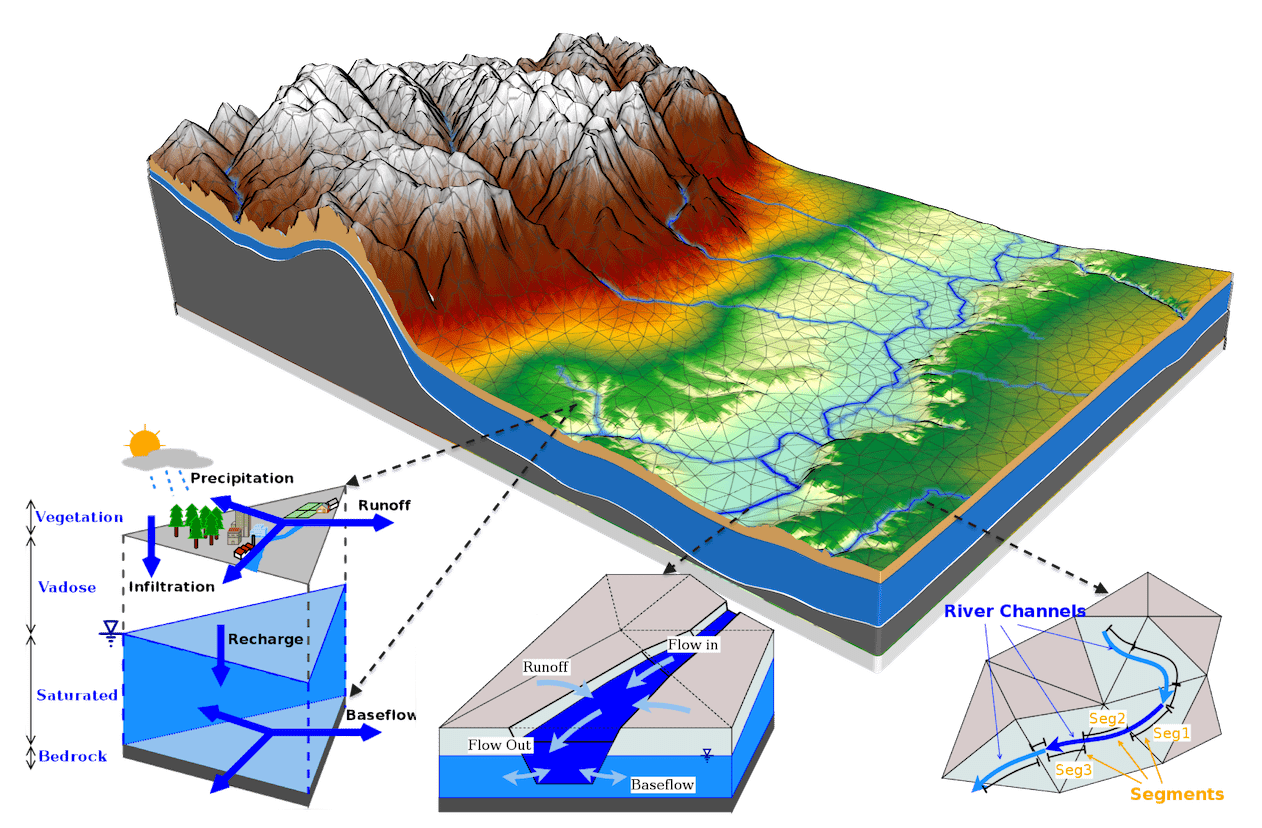The User Guide of SHUD model: html
Overview
The Simulator for Hydrologic Unstructured Domain (SHUD - pronounced “SHOULD”) is a multi-process, multi-scale hydrological model where major hydrological processes are fully coupled using the semi-discrete Finite Volume Method (FVM).
SHUD encapsulates the strategy for synthesizing multi-state distributed hydrological models using the integral representation of the underlying physical process equations and state variables. As a heritage of Penn State Integrated Hydrologic Model (PIHM), the SHUD model is a continuation of 16 years of PIHM modeling in hydrology and related fields since the release of its first PIHM version (Qu, 2004).
The SHUD’s design is based on a concise representation of a watershed and river basin’s hydrodynamics, which allows for interactions among major physical processes operating simultaneously, but with the flexibility to add or drop states/processes/constitutive relations depending on the objectives of the numerical experiment for research purpose.

The SHUD is a distributed hydrological model in which the domain is discretized using an unstructured triangular irregular network (e.g., Delaunay triangles) generated with constraints (geometric and parametric). A local prismatic control volume is formed by the vertical projection of the Delaunay triangles forming each layer of the model. Given a set of constraints (river network, watershed boundary, elevation, and hydraulic properties), an “optimized mesh” is generated. The “optimized mesh” indicates the hydrological processes with the unstructured mesh can be calculated efficiently, stably and rationally (Farthing & Ogden, 2017; Vanderstraeten and Keunings, 1995; Kumar, Bhatt and Duffy, 2009). River volume cells are also prismatic, with trapezoidal or rectangular cross-section, and maintain the topological relation with the Delaunay triangles. The local control volumes encapsulate all equations to be solved and are herein referred to as the model kernel.
Acknowledge
We deeply acknowledge the continuous scientific and financial support to the SHUD development activities by following institutions:
- Chinese Academy of Sciences
- Northwest Institute of Eco-Environment and Resources, Chinese Academy of Sciences
- Pennsylvania State University
- University of California Davis
- National Science Foundation
- United States Environmental Protection Agency
- The Defense Advanced Research Projects Agency